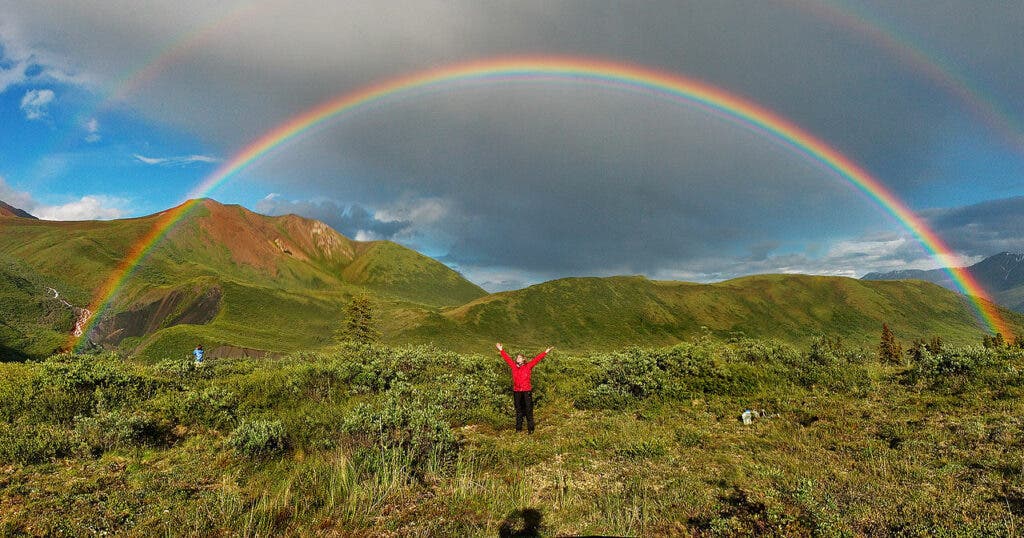Yes, the world is dealing with a severe climate crisis that it’s likely to get worse in the next few decades and affect the entire planet — but at least we’ll get to see more rainbows. The authors of a new study estimated that by 2100, the average land location on Earth will get at least 5% more days with rainbows than at the beginning of the 21st century.
As cool as rainbows are, though, this is a pale consolation.

The rainbow, a common atmospheric optical phenomenon, appears as a multicolored half-circle in the sky created from the refraction and reflection of light by liquid water drops. The chances of seeing a rainbow depend on changing precipitation rates, cloud cover, and other conditions such as the sun’s angle, the time of day, and the elevation of the land.
While they don’t seem to play any significant role for life on Earth, rainbows are cherished culturally and can be found in films, music, religion, and arts. They seem to happen everywhere in the world where the right conditions are met and carry with them symbolic meanings that invoke deep connections with the natural world.
Researchers at New York University and the University of Hawaii at Manoa set out to understand what happens to the phenomenon of the rainbow as the climate changes. For this, they developed a global database of rainbow photos, trained a model of rainbow occurrence, and applied it to present-day climate and three future climate scenarios.
Rainbows and climate change
It’s the first time the effect of climate change on rainbows has been studied, the researchers said. They looked at over 7,000 verified images of rainbows taken between 2004 and 2013, taken from every corner of the world – except Antarctica. Then they estimated the likelihood of a rainbow appearing in different locations across the world.
They measured rainbows against the anticipated changes in rainfall, cloud cover and other factors so to project future rainbow rates. For example, snow doesn’t produce rainbows because it’s not liquid. But some locations in a warmer world might see less snow and more rain, while others that now have a lot of rain might see more dry days.
Until now, rainbows have been most common in Kenya, Madagascar, Liberia, and other parts of coastal Africa, as well as in similar climates of Central and South America. Islands like Hawaii also have many rainbows. On the other end, arid regions in China, the Arabian Peninsula, and the Sahara Desert have seen fewer rainbows.
Depending on the level of global warming, and accounting the future population trends, the researchers estimated that for many people the chances of seeing a rainbow will increase by 2100. Basically, the average person will see between 1.9 and 4.0 more rainbows days per year, according to the study’s findings.
However, this variates from region to region. Under a future with the highest level of emissions, the Mediterranean, much of Brazil, southern Australia, parts of Central and Southern Africa, and northeast South America will see a decline on rainbow days. This could have an economic impact on tourism, as viewing rainbows now is quite common.
“Our results underscore the fact that climate change will alter not just tangible earth system dynamics with clear socio-economic implications, but also parts of the earth system that we cannot touch, and that may affect us in more subtle ways,” the researchers wrote. “Other non-tangibles will be affected by a changing climate.”
The study was published in the journal Global Environmental Change.






